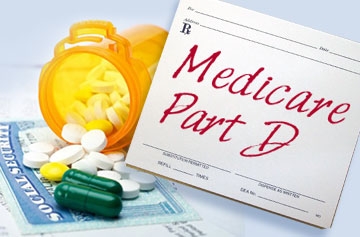iHealthBeat, Friday, May 1, 2015
On Thursday, CMS posted data on a public website covering about $103 billion in Medicare prescription drug spending in 2013, in the most-detailed breakdown of such spending ever provided, the New York Times reports (Thomas/Pear, New York Times, 4/30).
Background
The data for Medicare Part D were released as part of federal efforts to increase health care transparency. In recent years, CMS has made public data on hospital charges, health care delivery variations by geographic location and Medicare provider payments (Ornstein, ProPublica, 5/1).
Data Details
CMS officials said they decided to make the Medicare prescription drug spending data public to encourage experts to review and analyze the data to generate new solutions for health policy challenges, such as containing costs.
The data include information from 2013 — the most recent year available — about:
- One million prescribers;
- 36 million beneficiaries (New York Times, 4/30); and
- Nearly 1.4 billion prescriptions (ProPublica, 5/1).
The data do not include rebates that drug manufacturers pay to insurers that operate Medicare beneficiaries’ drug plans (New York Times, 4/30).
Overall, the data show that in total, Part D spent $103.7 billion on drugs. However, accounting for rebates from drugmakers, Part D spending was $69.7 billion in 2013.
Further, the data show that:
- Brand-name drugs for common conditions, such as acid reflux and asthma, made up Medicare Part D’s three largest expenditures, according to the data (Walker/Wilde Mathews, Wall Street Journal, 4/30);
- The largest amount of spending — more than $2.5 billion — was on Pfizer’s heartburn treatment Nexium, which was prescribed to about 1.5 million beneficiaries in 2013 (New York Times, 4/30); and
- Lisinopril, which is used for high blood pressure, was the most frequently prescribed drug, with about 36.9 million claims (ProPublica, 5/1).
In releasing the data, CMS Deputy Administrator Sean Cavanaugh said, “We know that there are many, many smart minds in this country,” adding, “We are excited to unleash those minds and see what they can find in our data” (New York Times, 4/30). Cavanaugh said the release could “help energize the private sector” to find efficiencies and improve Part D (Wall Street Journal, 4/30).
Reaction
Eric Hammelman, a vice president at Avalere Health, said the Medicare Part D data could help unlock clues on the differences in provider prescribing habits and how they practice medicine (ProPublica, 5/1).
Meanwhile, the Pharmaceutical Research and Manufacturers of America in a statement said the data are “misleading,” given that insurers often negotiate rebates that can go as high as 20% to 30% for branded drugs (Wall Street Journal, 4/30).
Further, American Medical Association President Robert Wah in a statement said the group is “troubled by the lack of context provided with the data that could help explain physician prescribing practices and pharmacy filling practices before conclusions are drawn.”
CMS officials also warned against drawing too many conclusions from the data (Neergaard, AP/Los Angeles Times, 4/30).
